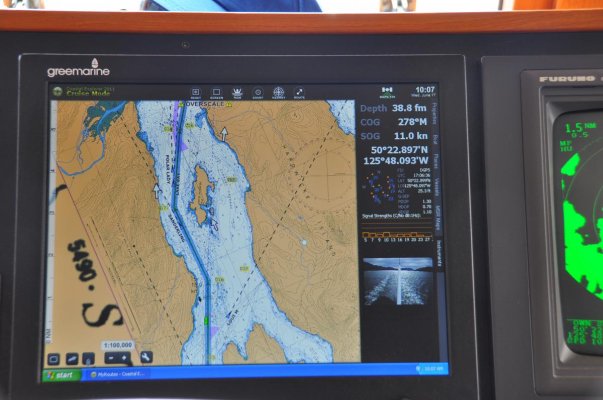JDCAVE
Guru
- Joined
- Apr 3, 2011
- Messages
- 2,907
- Location
- Canada
- Vessel Name
- Phoenix Hunter
- Vessel Make
- Kadey Krogen 42 (1985)
I currently have a "Paxcom" Computer for navigation, video monitor and Airmar windstation, etc. This was a installed by the PO with Coastal Explorer, etc. Nothing is wrong with it per se, except it is older (8 years) and it has a Windows XP operating system. It is not connected to the internet except when I need to update charts and the Coastal Explorer software. I want to continue the PC route for navigation, with a dedicated under the helm computer, with keyboard, mouse and helm monitor. Paxcom is still operating. It's a small company in Seattle, that has commercial fishermen and tow boat operators as clients. Quite frankly, I think it's owner operated, so very small.
The CE software displays depth, GPS course and wind speed, and I presume that inputs are received by NMEA 0183, although I have not traced all wiring. Preferences:
Thanks!
Jim
The CE software displays depth, GPS course and wind speed, and I presume that inputs are received by NMEA 0183, although I have not traced all wiring. Preferences:
- The current computer is 12 VDC, and I would prefer to stay with that arrangement, although would also like the provision for an AC power source when I take the unit home to update charts and software.
- Windows Operating system. Either Windows 7 or 10. I have heard that Windows 10 is buggy.
- Solid State "Hard drive" for storage.
- Have heard good things about the Nemo Gateway and wonder if it is applicable in this installation?
- WIFI/wireless capable.
- Capacity to continue with the features I have, with window for video camera feed (aft looking camera). Display of apparent and true wind and depth on the screen.
- At this time, I am not interested in a radar overlay on the chart plotter.
Thanks!
Jim
Last edited:


